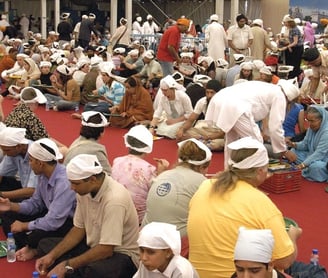Langar: The World's Largest Community Kitchen that Feeds Millions Daily
TRAVEL & HERITAGE


Langar isn't just food—it's faith in action. Introduced by Guru Nanak Dev Ji, Langar represents equality, unity, and compassion, where rich or poor, Hindu or Muslim, everyone eats together. The Golden Temple alone serves over 100,000 people a day, purely by volunteer support. This post will explore how Langar is organized, how people contribute through seva, and how it’s become a global symbol of selfless service.
In the heart of Punjab lies one of the world’s most powerful examples of equality and humanity—Langar, the Sikh tradition of a free community kitchen. Originated by Guru Nanak Dev Ji, Langar reflects the spirit of seva (selfless service) and equality. No matter your religion, status, or gender—everyone is welcome to sit on the floor and share the same meal.
The Golden Temple Langar in Amritsar is the world’s largest free kitchen, serving over 100,000 meals daily. What’s more remarkable? It’s entirely run by volunteers, also known as sevaks, who chop vegetables, cook dal, serve rotis, and wash utensils with unmatched devotion.
From small gurdwaras in pindaan to massive setups in cities, Langar symbolizes how Punjab uses community power to create impact. It isn’t just about food—it’s about dignity, compassion, and inclusion. In times of crisis, like during the farmer protests or COVID-19 lockdowns, Langar extended beyond gurdwaras to railway stations, hospitals, and protest sites.
Punjabified communities have upheld this tradition globally—from Canada to Australia—reminding us that sharing food is the purest form of love.
